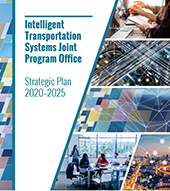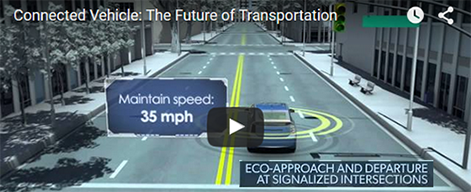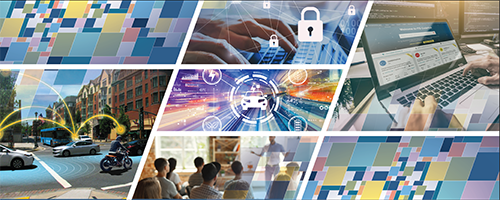Research Archive
Report from the 2015 Automated Vehicles Symposium (AVS 2015) in Ann Arbor, Michigan
Transportation is making major moves toward a future system of vehicles wirelessly communicating with each other and eventually driving themselves to avoid accidents and save lives. These connected automated vehicles are a major part of the U.S. Department of Transportation (USDOT) research agenda. Thus, several USDOT leaders and staff participated in the recent 2015 Automated Vehicles Symposium (AVS 2015) held in Ann Arbor, Michigan, to discuss this hot topic within the transportation industry.
The National Academies Transportation Research Board (TRB) and Association of Unmanned Vehicle Systems International (AUVSI) partner together to host the annual automated vehicle event, now in its fourth year. The symposium focuses on the impact, benefits, challenges, and risks of increasingly automated road vehicles and the environments in which they operate. AVS 2015 was held from July 21 through 23 and brought together key government, industry, and academic experts from around the world to identify opportunities and challenges in automated vehicle research.
National Highway Traffic Safety Administration (NHTSA) Administrator Dr. Mark R. Rosekind delivered the keynote address on the first day of the symposium. Dr. Rosekind reiterated Secretary Foxx’s commitment to pursuing innovations, such as connected automation, that can transform every mode of transportation. He also highlighted the USDOT’s role in pursuing advanced technologies that improve safety through policy initiatives such as NHTSA’s acceleration of its rulemaking process on vehicle-to-vehicle (V2V) communications, testing for potential spectrum sharing and interference with V2V radio signals, and developing a regulatory framework that removes barriers to technology innovation. In addition, Dr. Rosekind discussed major issues in connected automation such as the human-machine interface, cybersecurity, and privacy and the various initiatives underway to address them. The administrator concluded his keynote with a challenge to the industry to work collaboratively to address the shared responsibility of transportation safety and to design connected automated systems that are safe and do not themselves cause accidents.
Many of the event’s plenary and breakout sessions explored these issues in greater detail. Plenary sessions offered presentations from the public sector, automakers and suppliers, technology firms and academic research institutes on road automation issues such as key safety principles, ethical considerations, private investment, international collaboration and initiatives, public perception, human factors, automated trucking applications, digital infrastructure, state and city level issues, and more.
Breakout session topics included:
- Human Factors in the Design of Road Vehicle Automation
- Early Deployment Opportunities for Connected Automation Systems
- Beyond Single Occupancy Vehicles: Automating Transit and Shared Mobility
- Wireless Connectivity for Automated Vehicles: What Concepts Need It? What Technologies Provide It?
- Energy and Demand
- Integrated Traffic Flow Models and Analysis for Automated Vehicles
- Legal Pathways to Automated Vehicles
- Truck Automation
- Prioritizing Public Policy Challenges for Automated Vehicles
- Physical and Digital Infrastructure
- Vulnerable Road Users: How Can Automated Vehicle Systems Help to Keep Them Safe and Mobile?
- Verification and Validation of On-Road Automated Vehicles
- Implications of Vehicle Automation for Planning
- Beyond Single Occupancy Vehicles: Automating Transit and Shared Mobility
- Cybersecurity for Automated Vehicles
- Enabling Technologies
- Impact of Connected and Automated Vehicles on Traffic Management Systems and Operational Strategies
- Traffic Signal Control with Connected and Automated Vehicles.
AVS 2015 concluded with a USDOT Listening Session, during which USDOT program managers presented research plans and findings, discussed current issues in automated vehicle research, and shared key information they learned during the event. Many noted common concerns across the sessions including understanding of the transition period to full deployment of connected automated vehicles and the implications of mixed vehicles on the roads; consideration of the human element and how drivers will interact with the vehicles; the need for more standards; and the need for more research, testing, and data.
USDOT program managers also presented their work as part of the AVS 2015 poster sessions held during the first two days of the event.
Nearly 900 attendees, representing disciplines ranging from engineering to psychology to law, participated in the symposium over the course of the week—demonstrating the relevance of this transformative technology not only to the transportation industry but to society as a whole.











